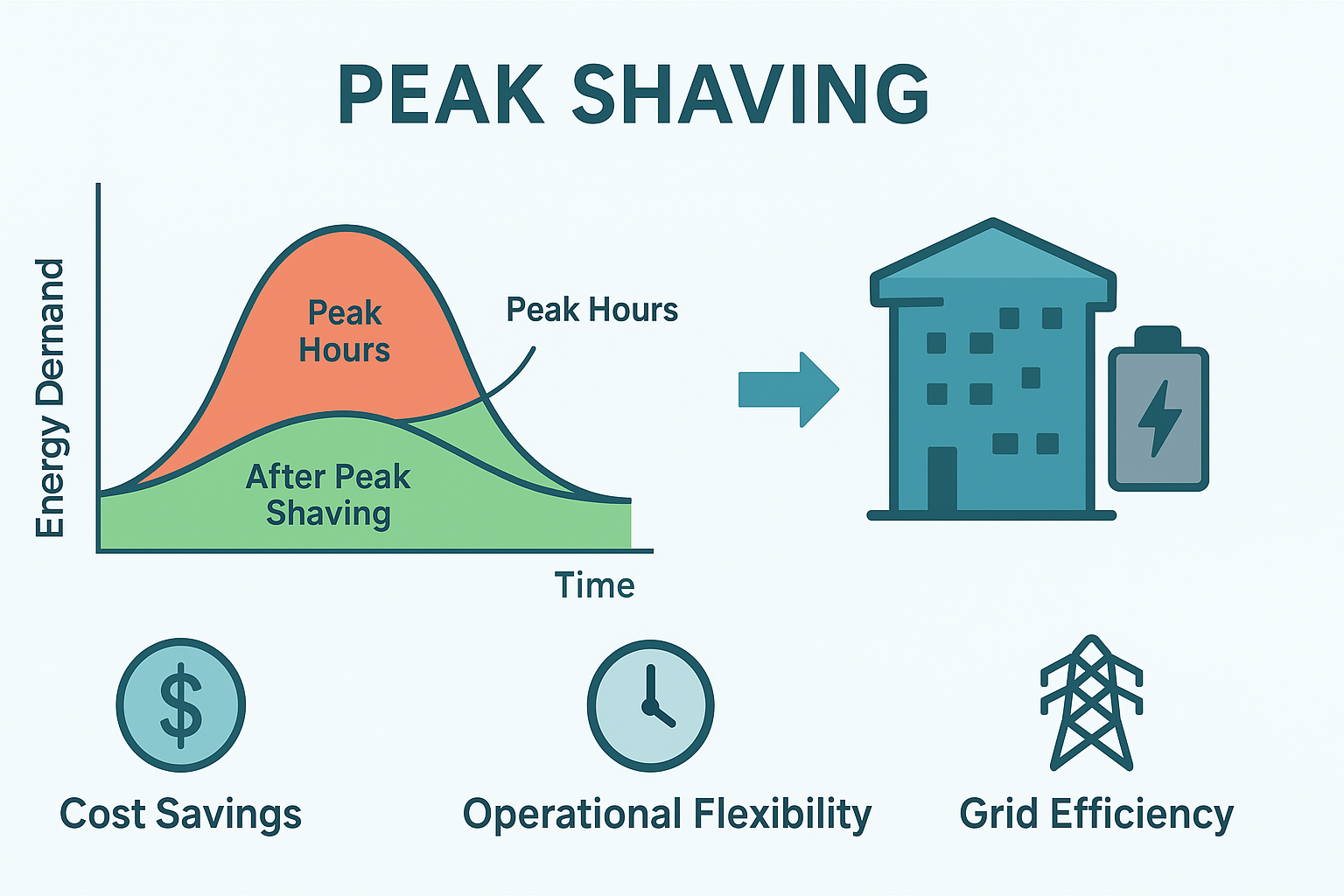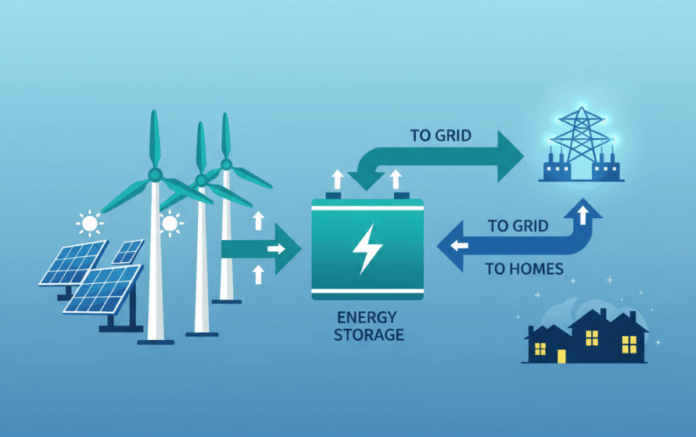As renewable energy adoption accelerates, grid operators face new challenges in balancing supply and demand. Battery Energy Storage Systems (BESS) have emerged as powerful tools for peak shaving and load shifting—two strategies that not only reduce energy costs but also enhance grid stability.
In this article, we’ll explore how BESS enables both peak shaving and load shifting, and how Sunlith Energy integrates these technologies to support smarter, more efficient power systems.
What Is Peak Shaving?
Peak shaving is the process of reducing electricity consumption during periods of highest demand—known as peak hours. By discharging stored energy from a battery during these times, consumers can avoid costly utility demand charges.

For commercial and industrial users, even a small reduction in peak load can translate into significant annual savings. Utilities also benefit from lower grid strain and reduced need for fossil-fuel-based peaker plants.
What Is Load Shifting?
Load shifting involves moving energy consumption from high-cost, peak periods to lower-cost, off-peak hours. BESS systems charge when energy is inexpensive or abundant (such as midday during solar generation) and discharge when demand—and price—rises.
This flexibility allows both businesses and utilities to optimize their energy mix, reduce bills, and integrate more renewable sources into the grid.
How BESS Makes It Possible
Modern BESS units combine lithium-ion or advanced chemistry batteries with smart inverters and energy management software. The system continuously monitors demand, grid frequency, and energy pricing to determine when to charge or discharge power.
Here’s how it works in practice:
- During low demand: The system charges using low-cost grid or solar energy.
- During peak demand: Stored energy is discharged to avoid expensive peak tariffs.
- During emergencies: BESS can provide backup power, enhancing energy resilience.
Benefits for Businesses and the Grid
The financial and operational benefits of BESS-based peak shaving and load shifting are substantial:
- Reduced energy costs: Avoid high demand charges and optimize tariff structures.
- Improved energy resilience: Maintain power during grid fluctuations or outages.
- Enhanced grid efficiency: Smooth out power demand and support renewable integration.
- Lower carbon footprint: Reduce reliance on fossil fuel peaker plants.
Real-World Example: How Sunlith Energy Optimizes Peak Shaving
Sunlith Energy designs and deploys battery energy storage systems that enable both commercial and utility clients to manage demand intelligently. By combining AI-driven energy management with modular storage units, Sunlith’s solutions deliver measurable cost savings and carbon reduction.
The company’s systems are adaptable across applications—from industrial manufacturing plants to renewable microgrids—making them ideal for the evolving energy landscape.
Future Outlook: Smarter Grids and Dynamic Pricing
As smart grids and time-of-use pricing become more prevalent, the role of BESS in demand management will only grow. Advanced forecasting, AI algorithms, and dynamic grid participation will make energy storage systems even more profitable and sustainable.
Businesses that invest early in peak shaving and load shifting technologies will not only reduce costs but also position themselves as leaders in the clean energy transition.
Conclusion
Battery Energy Storage Systems are reshaping how power is consumed and managed. Whether through peak shaving to cut demand costs or load shifting to maximize renewables, these systems offer a smarter, cleaner path to energy independence.
For more insights on deploying energy storage solutions effectively, visit Sunlith Energy.
FAQs: Peak Shaving and Load Shifting with BESS
What is the main difference between peak shaving and load shifting?
Peak shaving focuses on reducing power consumption during the highest demand periods to avoid peak charges, while load shifting moves consumption from peak to off-peak hours to take advantage of cheaper electricity rates.
How can businesses implement peak shaving?
Businesses can deploy battery storage systems to discharge during high-demand periods, supported by energy management software that tracks usage patterns and automates responses.
What size of battery system is required for effective load shifting?
Battery size depends on load profile, daily energy consumption, and duration of desired backup. Typically, systems are sized to handle 2–4 hours of energy demand during peak pricing windows.



